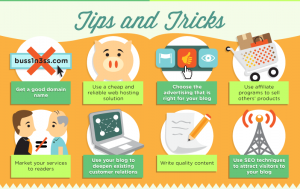If your car ran well sometimes but not others, you’d probably run a diagnostic. If you found one system or part worked well, you’d move onto the next until you knew what was wrong and what wasn’t. The same can hold true for your marketing program. Auditing your marketing program helps you diagnose what is working and what isn’t. Doing so at a specified time and breaking it into clear, definable steps supported by quantifiable data will ensure your business moves in the right direction.
Why Audit Your Marketing Program?
According to MarketingAudit.com, an audit helps better align your marketing program to your business goals and your organization’s resources. An audit can help you identify what you’re doing that’s clearly working as well as pain points inside your organization and those that stop your customers from moving forward. A thorough audit can result in increased value for your customers and profit for your business.
Depending on your industry, you may find some questions here work better than others. You also may opt to do this quarterly, yearly or on some other consistent schedule. But always seek to support findings with facts and data.
An audit can be a time and labor intensive process. Some organizations may opt for an outside audit and hire an outside consultant who can objectively oversee your audit. Though, you can structure it with executive oversight or as an intra-department audit.
If you’re not sure where to begin, use this step-by-step guide as a basis.
Prepare For Your Audit
To prepare, outline the following:
- What is the goal of the audit?
- What system will you use?
- What resources do you need for each stage of the audit?
- How will you gather data? Who will do so?
- How will you analyze the data? What quantifiable information will you use to support findings?
First Stage: Use The “SWOT” Assessment
“SWOT,” or strengths, weaknesses, opportunities and threats, is a marketing analysis tool to provide a general overview of your marketing program.
You can start by answering these questions and brainstorming any additional points you might include.
Strengths. What does your business have going for it?
- Good location for your industry?
- High-level of marketing expertise within the industry?
- Efficiently used tools?
- High quality products?
- Clearly defined brand apart from competitors?
Weaknesses. What’s holding your business back?
- Is the location working against you?
- Do key members of your marketing team lack experience, or lack experience in certain aspects of the industry?
- Poor product or service reputation or quality?
- Not clearly defined brand as it relates to competition?
Opportunities. Where can your business grow?
- Where should you be based on what’s happening there?
- Is there a market space that’s less crowded than it was, where there’s now room for your product or service?
- Any new product development opportunities?
Threats. What external factors inhibit opportunity and growth?
- Are you clear on who your competitors are?
- Is additional competition a factor?
- Are there volatility, bureaucracy or high tax rates in a certain market?
- Do competitors have better access to key sales channels?
Second Stage: Extensive Research On What Worked In The Past And What Didn’t
According to BrandQuaterly, a marketing audit is: comprehensive, systematic, independent and periodic. And expect this part of an audit to be comprehensive and time-intensive.
You can use the following steps at this stage:
- Analyze internal systems.
- Review your product or service.
- Clarify all aspects of competition.
Analyze your internal structure. Review every step of the system you use in your marketing plan. This is an opportunity to define what works well.
- Is your CRM or use of your CRM effective? Have you received feedback from everyone in this regard? On the whole, is the feedback positive, negative, or is there a “poor plumbing pattern” where the process becomes clogged?
- Which client relationships or campaigns were well-managed and why? Any tool or step that’s consistently highlighted from this question? Any that’s in need of an overhaul?
- Does your marketing team have expertise in the marketing channels you currently use?
- Is your CMS effective? Do you have checklists in place and consistent analysis of analytics data?
Review your product or service. Your marketing teams may be so busy managing the marketing side an audit allows you to clarify where you can get back up to speed in expert, first-hand knowledge about your product.
- Is every member of your marketing team knowledgeable about all areas of your product or service?
- Does the product or service have new or different functionality that’s not been well-supported in your former or current marketing program?
- What’s the highest value your product delivers?
- Is it a quality product or service? How do you know?
- Is there one particular area your customers repeatedly give feedback on?
Become clear on all aspects of your competition.
- Can you define your competition?
- Have you identify between 3-6 competitors in your market?
- What are your competitors doing (really) well? How?
- What differentiates you from your competitors? Why?
- Are there any potential competitors (those that offer a different product in another segment that creates higher value for your customers)?
Glean what worked well and what didn’t in past marketing results.
After analyzing the first three parts of stage two, you can have a better sense of what the problem was (and what it wasn’t) in past marketing efforts. Reviewing your past marketing program, strategy and campaigns with questions like these below is the final step of this second stage.
- Do you have clear objectives for each marketing channel as it relates to your brand voice and data that clearly reflects how your strategy has worked?
- Do you have measurable results?
- Are you clear on every metric of your analytics? Where do you need more clarity?
- What campaigns were the most successful? What weren’t? Was there a profit loss or a high rate of return? Was there high engagement with low conversion?
Stage 3. Re-define Your Objectives And Goals
Before doing an audit, you may believe you have the right goal and the wrong plan. Instead, you can treat all goals aside from increased revenue and customer satisfaction as strategy. Your business objectives might be increased revenue, higher conversions or breaking into a new market while your goals are reflected in your strategy.
Once you’ve audited your marketing program, you’ll have a much more immediate, clear sense of the bottom-line question: What’s working–and what’s no longer or never did work?
When finished with your audit, it’s typical for an organization to prepare a report with all the data. From this report, you can a re-define your objectives, goals and update your marketing program to reflect your findings.
Undertaking an extensive audit takes time and resources, and doing so can bring positive, clarifying results. How has your business benefitted from an audit? Share with us here.
Tricia Mool is a Bay Area freelance copywriter, blogger–and analogy addict. She’s dedicated to helping tech, healthcare and education businesses grow their audience–one well-chosen word at time. Follow her on Twitter @teejaywrites for practical tips and resources.
(294)














